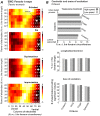Are the forearm muscles excited equally in different, professional piano players?
- PMID: 35316295
- PMCID: PMC8939780
- DOI: 10.1371/journal.pone.0265575
Are the forearm muscles excited equally in different, professional piano players?
Abstract
Background and objectives: Professional pianists tend to develop playing-related musculoskeletal disorders mostly in the forearm. These injuries are often due to overuse, suggesting the existence of a common forearm region where muscles are often excited during piano playing across subjects. Here we use a grid of electrodes to test this hypothesis, assessing where EMGs with greatest amplitude are more likely to be detected when expert pianists perform different excerpts.
Methods: Tasks were separated into two groups: classical excerpts and octaves, performed by eight, healthy, professional pianists. Monopolar electromyograms (EMGs) were sampled with a grid of 96 electrodes, covering the forearm region where hand and wrist muscles reside. Regions providing consistently high EMG amplitude across subjects were assessed with a non-parametric permutation test, designed for the statistical analysis of neuroimaging experiments. Spatial consistency across trials was assessed with the Binomial test.
Results: Spatial consistency of muscle excitation was found across subjects but not across tasks, confining at most 20% of the electrodes in the grid. These local groups of electrodes providing high EMG amplitude were found at the ventral forearm region during classical excerpts and at the dorsal region during octaves, when performed both at preferred and at high, playing speeds.
Discussion: Our results revealed that professional pianists consistently load a specific forearm region, depending on whether performing octaves or classical excerpts. This spatial consistency may help furthering our understanding on the incidence of playing-related muscular disorders and provide an anatomical reference for the study of active muscle loading in piano players using surface EMG.
Conflict of interest statement
The authors have declared that no competing interests exist.
Figures





Similar articles
-
Effect of induced extrinsic and intrinsic hand and forearm muscular fatigue on the control of finger force during piano playing.Hum Mov Sci. 2025 Feb;99:103319. doi: 10.1016/j.humov.2024.103319. Epub 2025 Jan 10. Hum Mov Sci. 2025. PMID: 39798224
-
Exhausting repetitive piano tasks lead to local forearm manifestation of muscle fatigue and negatively affect musical parameters.Sci Rep. 2021 Apr 14;11(1):8117. doi: 10.1038/s41598-021-87403-8. Sci Rep. 2021. PMID: 33854088 Free PMC article.
-
Quantifying forearm muscle activity during wrist and finger movements by means of multi-channel electromyography.PLoS One. 2014 Oct 7;9(10):e109943. doi: 10.1371/journal.pone.0109943. eCollection 2014. PLoS One. 2014. PMID: 25289669 Free PMC article.
-
Comparing two methods to record maximal voluntary contractions and different electrode positions in recordings of forearm extensor muscle activity: Refining risk assessments for work-related wrist disorders.Work. 2018;59(2):231-242. doi: 10.3233/WOR-172668. Work. 2018. PMID: 29355119 Free PMC article.
-
Placement of forearm surface EMG electrodes in the assessment of hand loading in manual tasks.Ergonomics. 2013;56(7):1159-66. doi: 10.1080/00140139.2013.799235. Epub 2013 May 28. Ergonomics. 2013. PMID: 23713662
References
-
- Zaza C, Charles C, Muszynski A. The meaning of playing-related musculoskeletal disorders to classical musicians. - PubMed
MeSH terms
Associated data
LinkOut - more resources
Full Text Sources

